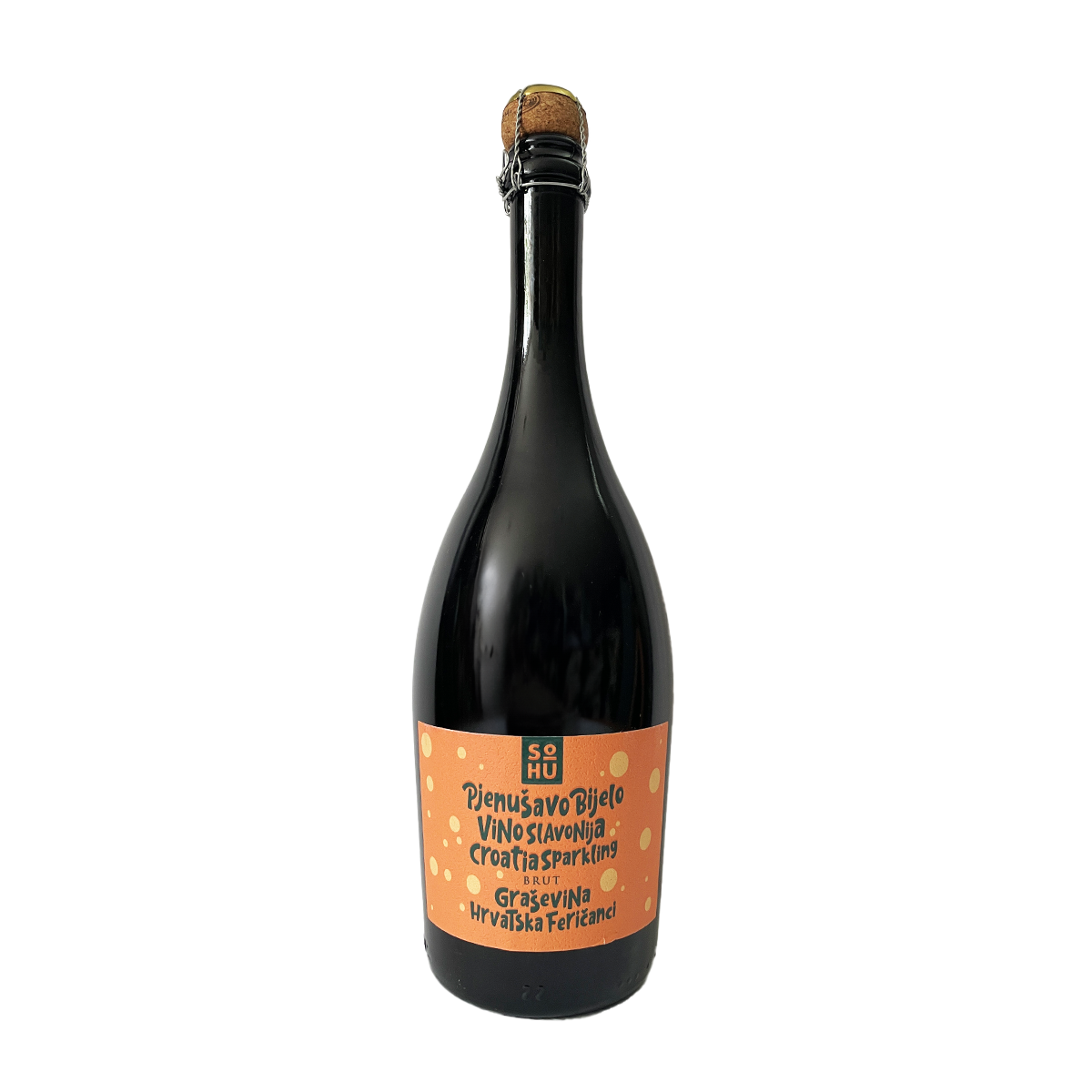SoHu Sparkling
Winery: SoHu
Classification: Dry Sparkling wine
Varieties: 100% Graševina (aka Welschriesling)
Appellation: Fericanci, Slavonia, Croatia
Annual Production: 6,000 bottles
Alcohol: 11.5%
Climate: Continental, with dry and hot summers, and cold, snowy winters
Terrain: Most of the vineyards are on southern sun-exposure slopes that receive constant breezes. Exceptional quality volcanic and sandy soils with white clay stones, on a bedrock of slate and granite.
Farming: No irrigation. A minimal amount of spraying, as needed, only with substances approved for sustainable farming in Slavonia, Croatia.
Vinification: Hand-harvested and de-stemmed, while harvesting early for higher acidity and lower sugar and to achieve refreshing low-alcohol. Fermentation is direct press and weekly battonage for 2-3 months, until it is transferred to tank for secondary fermentation underdoing the Charmat method. The wine undergoes a vegan-friendly coarse filtration before bottling.
Notes: Graševina is a quite a versatile grape, and when it is picked up early it maintains great acidity along with a fruit profile, perfect for an exciting dry and refreshing sparkling wine. From vineyards located just South of the Hungarian border (SoHu!), the wine offers elegant and round bubbles, with bright but poignant fruitiness aromas. The palate is surprisingly packed with vivid yellow and green fruits, with tons of citrus, green apple, lemon zest and a subtle floral notes of cherry flowers. This wine is an every day sparkling wine that we all need! An interesting and exciting expression of the Graševina grape and a fun reflection of Slavonia, yet also a easy, delicious and refreshing sparkler made for celebrating every damn day!
Winery Information
SoHu Winery
Tucked in the northeastern corner of Croatia, in the Croatian Danube region, right below the border of Hungary, lies Slavonija: one of Croatia’s most important winegrowing regions and the home of Croatia’s most important white grape: Graševina (aka Welschriesling). The winery’s original cellar was built in 1804 and has evolved over multiple generations when Croats from northern Dalmatia began trading in this region and sharing their viticultural knowledge with the region.


